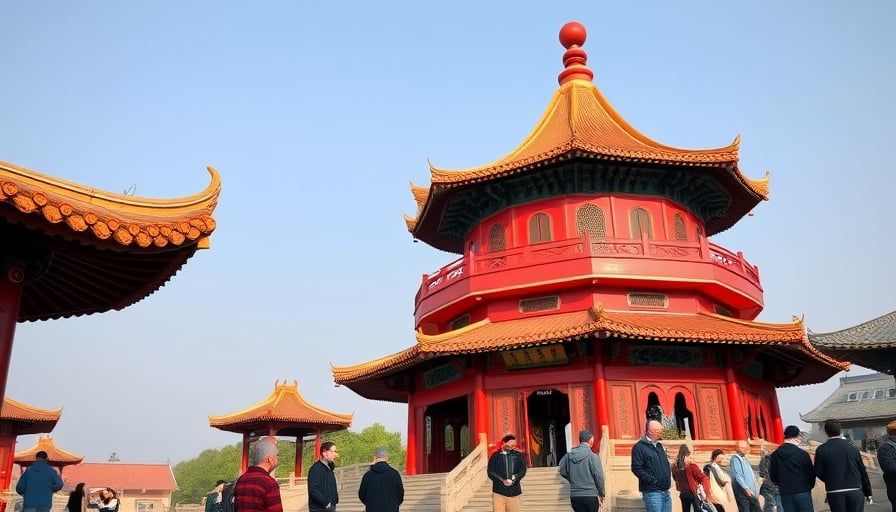Ping An Insurance Group Co. of China Ltd.: Strategic Momentum and Market Dynamics
Ping An Insurance Group Co. of China Ltd. (HK: 601318) remains a dominant force in the Chinese financial services sector, leveraging its five‑ecosystem model that spans insurance, healthcare, automotive services, real‑estate solutions, and Smart City initiatives. With a market capitalization of HK$1,132 billion, a 52‑week high of HK$61.15, and a price‑to‑earnings ratio of 6.94, the group has maintained a solid valuation profile while pursuing aggressive growth in both core and adjacent businesses.
Cultural Foundations as a Strategic Imperative
At the 2025 Gold No Financial Culture & Brand Conference in Shenzhen on November 19, Ping An’s brand and publicity chief, Chen Yao, underscored the company’s commitment to cultivating a robust financial culture. “Beyond talent, capital, and technology, a sustainable culture is the foundation that allows an enterprise to thrive,” Chen said. He highlighted the group’s adherence to Chinese‑style insurance values: integrity, prudent risk management, and lawful compliance, positioning these principles as pillars for long‑term resilience and stakeholder confidence.
Expanding the Global Footprint Through Overseas M&A
The same day, the 36th Lujiazui Financial Salon in Shanghai hosted a roundtable on overseas mergers and acquisitions. Key participants included Morgan Stanley, Industrial and Commercial Bank of China, and Ping An Property‑Insurance Co., Ltd. The dialogue emphasized a “full‑chain” perspective on international deals, from pre‑transaction strategy to post‑integration. Ping An’s participation signals its intent to deepen global exposure, diversify risk, and import best practices that can be localized across its insurance, healthcare, and Smart City platforms.
Deepening Healthcare and Family Office Services
In a parallel development, Ping An launched the “Yù Xiǎng Nèi Yī” (御享国医) and family‑office services in Changsha. The inaugural event, held on November 20, marked a milestone in Ping An’s “comprehensive finance + medical‑pension” strategy. The move is aimed at delivering integrated wealth‑management solutions that blend traditional insurance products with tailored health‑care plans and legacy preservation services. By anchoring these offerings in a major provincial capital, Ping An signals its readiness to capture the growing middle‑class demand for holistic, digitally enabled financial solutions.
Market‑Level Activity: ETF Flows and Investor Sentiment
Ping An’s exposure to ETFs has been closely monitored by institutional investors. On November 19, the group recorded a net outflow of HK$156 million in ETF holdings, with a cumulative outflow of HK$95 million over the same period. Conversely, by November 20 the net inflow reversed to HK$563 million, reflecting a shift in investor sentiment as Ping An’s strategic initiatives began to materialize. The 5120 “Security‑Insurance” ETF, which holds a significant stake in Ping An, contributed substantially to these flows, indicating that institutional capital is increasingly attentive to the company’s long‑term value creation trajectory.
Navigating Corporate Governance and Stakeholder Relations
Ping An’s influence extends into corporate governance realms, evidenced by its involvement in the restructuring discussions surrounding Huaxia Xingfu. As a board representative, Ping An’s director, Wang Wei, raised procedural concerns over the company’s pre‑restructuring announcement, citing non‑compliance with board‑meeting protocols. Although the dispute was largely symbolic, it underscored Ping An’s active role in safeguarding shareholder interests and maintaining stringent governance standards across its investment portfolio.
Forward Outlook
Cultural Capitalization – By embedding its core values into everyday operations, Ping An is likely to strengthen risk management practices and stakeholder trust, positioning itself favorably against regulatory tightening and market volatility.
Global Expansion – The active participation in overseas M&A forums suggests an impending wave of cross‑border acquisitions or joint ventures, which could unlock new revenue streams and introduce advanced technologies to the group’s domestic ecosystem.
Healthcare Integration – The launch of family‑office and health‑care services is expected to diversify Ping An’s product mix, create new cross‑selling opportunities, and enhance customer stickiness, especially among aging demographics seeking integrated financial and wellness solutions.
Capital Allocation – Positive ETF inflows and the group’s robust balance sheet provide a buffer for strategic investments, whether in technology, talent acquisition, or market entry initiatives.
Governance Vigilance – Continued scrutiny of corporate governance matters, as seen in the Huaxia Xingfu episode, will likely reinforce Ping An’s reputation as a disciplined investor and corporate steward.
In sum, Ping An Insurance Group is leveraging a combination of cultural reinforcement, global expansion, and product diversification to sustain its leadership in China’s competitive insurance and financial services landscape. The company’s recent activities suggest a clear trajectory toward deeper integration of insurance, healthcare, and wealth management, underpinned by a steadfast commitment to prudent governance and stakeholder value.




